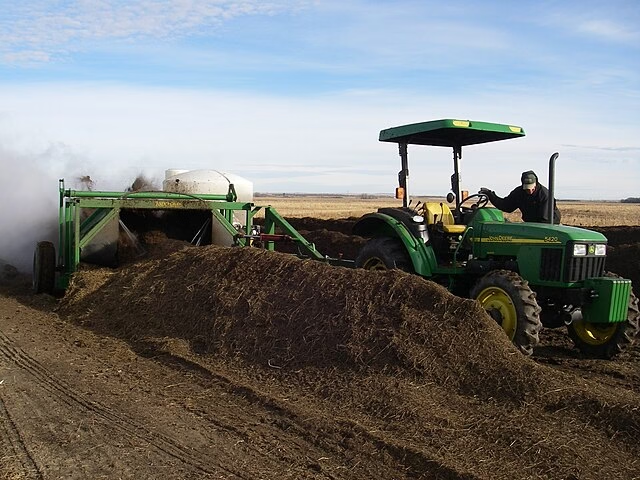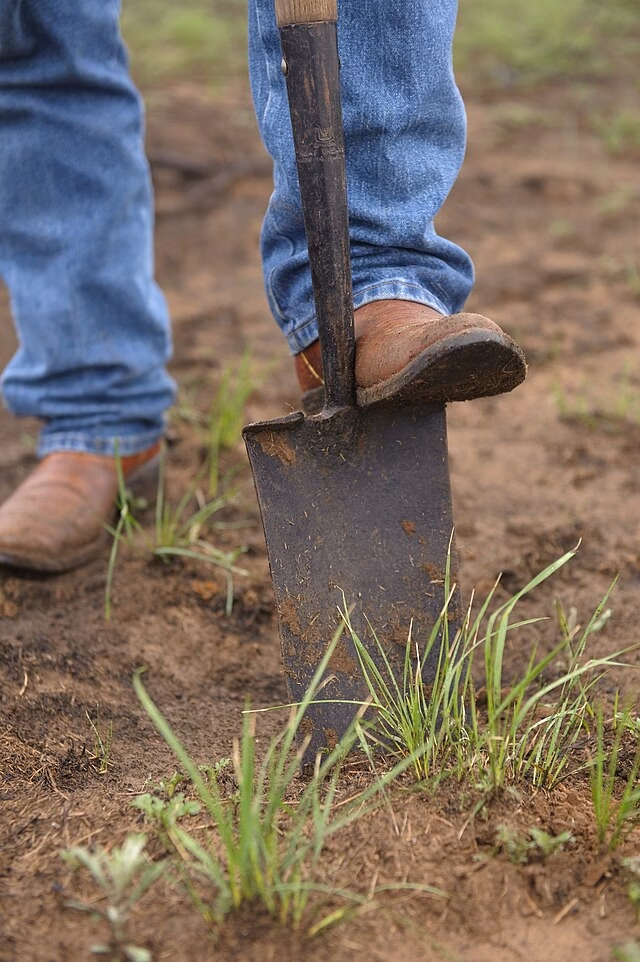Agricultural soil health represents the literal foundation of global food security, yet agricultural areas worldwide face unprecedented threats from subsidence, soil degradation, and foundation instability that remain largely undetected until crop production fails catastrophically.
The world’s growing population depends on increasingly fragile agricultural soils that face mounting pressures from climate change, intensive farming practices, and competing land uses.
What makes agricultural soil threats particularly dangerous is that most farmers and agricultural managers lack access to the precision investigation tools necessary to detect and address soil problems before they destroy agricultural productivity.
The Global Agricultural Soil Health Crisis
Agricultural soil health worldwide faces threats that operate below the surface, creating a hidden crisis that threatens food security for billions of people. These subsurface threats develop gradually over years or decades before becoming visible at the surface.
Monitoring agricultural soil health enables farmers to detect early signs of compaction, subsidence, and fertility loss.
Traditional agricultural assessment focuses on surface soil conditions, plant health, and visible soil problems. This surface-focused approach misses critical foundation issues that ultimately determine long-term agricultural productivity.
The result is an accelerating loss of agricultural land to preventable soil problems that precision investigation could easily detect and address.
Subsidence in Agricultural Areas
Agricultural subsidence affects millions of acres of farmland worldwide, destroying soil structure and reducing crop productivity. This subsidence typically results from groundwater extraction, soil compaction, and natural geological processes.
Agricultural subsidence often develops gradually, reducing crop yields over several seasons before farmers recognize the problem. By the time subsidence becomes obvious, the soil damage may be irreversible.
The economic losses from agricultural subsidence often exceed the entire value of agricultural production in affected areas.
Soil Structure Degradation
Intensive agricultural practices can destroy soil structure that took thousands of years to develop. Heavy machinery compacts soil layers, reducing water infiltration and root penetration.
Chemical inputs can alter soil chemistry in ways that reduce biological activity and soil stability. These changes affect soil strength and bearing capacity while reducing agricultural productivity.
The degradation process accelerates once soil structure begins to fail, creating a cycle of declining productivity that can make agricultural operations uneconomical.

Groundwater Depletion and Agricultural Soil Health
Groundwater depletion for agricultural irrigation creates subsidence problems across major farming regions worldwide. This depletion affects soil structure while threatening the long-term viability of agriculture itself.
Aquifer System Collapse
When groundwater extraction exceeds natural recharge rates, aquifer systems begin to collapse. This collapse causes permanent land subsidence that cannot be reversed even if groundwater levels recover.
Aquifer collapse affects agricultural operations by creating uneven field surfaces that interfere with mechanized farming. The subsidence can damage irrigation infrastructure and farm buildings.
Major agricultural regions including California’s Central Valley, Mexico’s agricultural areas, and parts of India face severe subsidence from groundwater depletion.
Irrigation Infrastructure Impacts
Subsidence damages irrigation infrastructure that farmers depend on for crop production. Canals crack and break as differential settlement stresses concrete and earthen structures.
Wells become damaged as soil layers compress around well casings. The damage can make wells unusable while creating expensive replacement requirements.
Irrigation system damage often costs more than annual crop production, threatening the economic viability of agricultural operations.
Soil Chemistry Changes
Groundwater depletion can alter soil chemistry by changing the movement of salts and minerals through soil layers. These chemistry changes affect plant growth while reducing soil stability.
In coastal areas, groundwater depletion can allow saltwater intrusion that makes agricultural soils unusable for crop production. The salt contamination can persist for decades even after groundwater levels recover.
Chemical changes in soil can interact with subsidence to create complex problems that require sophisticated solutions.
Climate Change Threats to Agricultural Soil Health
Climate change creates new agricultural soil challenges while accelerating existing problems. These climate-driven changes occur faster than traditional agricultural adaptation can address.
Climate change poses unprecedented risks to agricultural soil health, threatening global food production.
Extreme Weather Impacts
Increased frequency and intensity of extreme weather events create soil erosion and compaction that damages agricultural productivity. Heavy rainfall can cause soil erosion while flooding can deposit sediments that bury productive soils.
Drought conditions cause soil shrinkage that creates cracks and fissures in agricultural fields. These soil structure changes reduce water-holding capacity and increase erosion susceptibility.
The alternating wet-dry cycles associated with climate change create particularly damaging conditions for agricultural soils.
Temperature Effects on Soil Biology
Rising temperatures affect soil biological activity that maintains soil structure and fertility. Higher temperatures can reduce organic matter content while altering microbial communities.
These biological changes affect soil stability and agricultural productivity in ways that become apparent only after significant damage has occurred.
Temperature effects interact with other climate changes to create complex soil degradation patterns that require comprehensive assessment and management.
Precipitation Pattern Changes
Changing precipitation patterns affect soil moisture regimes that determine agricultural productivity. Many agricultural regions experience more intense precipitation events separated by longer dry periods.
These changes stress soil structure while creating erosion and compaction problems. Traditional agricultural practices developed for historical precipitation patterns become inadequate for changed conditions.
Agricultural adaptation requires understanding current soil conditions and projected changes to develop appropriate management strategies.
Case Study: Agricultural Soil Health and Productivity Risks
Consider a 10,000-acre agricultural operation in a major farming region that has produced consistent yields for decades. Surface assessment shows healthy crops with normal variations in productivity across different fields.
Soil testing reveals adequate nutrient levels and appropriate pH ranges. Irrigation systems appear to function normally with adequate water delivery to all fields.
Recent yield monitoring shows gradual decline in some fields, but farmers attribute this to weather variations and market economics.
But precision agricultural soil investigation reveals concerning conditions:
Groundwater monitoring shows declining water tables that indicate unsustainable extraction rates. Soil compaction testing reveals increasing density in subsurface layers that restrict root growth.
Settlement monitoring detects gradual subsidence that affects irrigation system efficiency. Soil strength testing shows deteriorating foundation conditions that threaten agricultural infrastructure.
This investigation provides 3-5 years advance warning of agricultural productivity decline that could destroy the economic viability of the entire operation.
Intensive Agriculture and Agricultural Soil Health
Modern intensive agricultural practices create soil compaction problems that reduce productivity while increasing subsidence risks. These compaction problems develop gradually and often go unrecognized until significant damage occurs.
Heavy Machinery Impacts
Heavy modern farm equipment significantly impacts agricultural soil health, contributing to soil compaction and reduced crop yields. This increased weight creates soil compaction in subsurface layers that restrict root growth and water movement.
Repeated traffic patterns concentrate loading on specific soil areas, creating compaction zones that persist for years or decades. The compaction reduces soil pore space and biological activity.
Compacted soils require more energy for tillage while providing reduced crop productivity. The economic impacts accumulate over time as yields decline and input costs increase.
Traffic Pattern Effects
Field traffic patterns create specific compaction zones that affect soil structure across entire farming operations. These patterns often concentrate stress on areas that become permanently damaged.
Controlled traffic farming systems can reduce compaction by limiting machinery traffic to specific lanes. However, most agricultural operations lack the precision guidance necessary for effective traffic control.
The cumulative effect of traffic compaction can make agricultural soils unsuitable for crop production within a few decades of intensive use.
Subsoil Compaction
Subsoil compaction occurs below the normal tillage depth and cannot be corrected by conventional cultivation practices. This compaction restricts root development and reduces drought resistance.
Subsoil compaction often develops gradually over many years before farmers recognize the problem. Once established, subsoil compaction requires expensive deep tillage or may be irreversible.
Detection of developing subsoil compaction requires specialized investigation techniques that most farmers cannot access.

Agricultural Infrastructure: The Overlooked Foundation
Agricultural operations depend on infrastructure systems including buildings, roads, irrigation facilities, and storage structures that face foundation challenges similar to urban infrastructure.
Farm Building Foundation Issues
Agricultural buildings often experience foundation problems due to soil settlement and changing moisture conditions. Grain storage facilities face particular challenges from concentrated loading and dynamic loads.
Livestock facilities create concentrated organic loading that can affect soil chemistry and stability. These facilities often lack adequate foundation investigation during design and construction.
The economic losses from farm building foundation failure often exceed the replacement cost of the buildings themselves.
Rural Road Infrastructure
Rural roads provide essential access for agricultural operations while carrying increasingly heavy loads from modern farming equipment. These roads often lack adequate foundation investigation and design.
Agricultural traffic creates dynamic loading patterns that accelerate road deterioration. The economic impacts of failed rural roads affect entire agricultural communities.
Rural road maintenance budgets typically cannot keep pace with damage from heavy agricultural equipment and extreme weather events.
Irrigation Infrastructure Stability
Irrigation infrastructure including canals, pipelines, and pump stations requires stable foundation conditions for reliable operation. Soil settlement can damage irrigation systems and reduce efficiency.
The replacement cost of damaged irrigation infrastructure often exceeds the annual value of crop production. Many agricultural operations cannot afford irrigation system replacement when foundation problems occur.
Precision foundation investigation can identify irrigation infrastructure problems before catastrophic failure occurs.
Global Food Security: The Soil Foundation Connection
Global food security depends on maintaining agricultural productivity on existing farmland while protecting soil resources for future generations. Soil foundation problems threaten both current production and long-term agricultural sustainability.
Population Growth Pressures
Global population growth increases food demand while agricultural land becomes more scarce. This pressure creates incentives for intensive agricultural practices that accelerate soil degradation.
The need to increase agricultural productivity must be balanced with soil protection to maintain long-term food security. Short-term production gains that damage soil foundation capacity threaten future agricultural potential.
Precision soil investigation enables agricultural intensification that maintains long-term soil health.
Climate Adaptation Requirements
Climate change requires agricultural adaptation that depends on understanding current soil conditions and projected changes. Traditional agricultural practices must evolve to address new climate conditions.
Agricultural adaptation requires investment in soil protection and improvement that competes with short-term production pressures. Long-term food security depends on prioritizing soil health over immediate productivity.
International cooperation is necessary to address global soil protection challenges that cross national boundaries.
Economic Development Conflicts
Economic development often converts agricultural land to urban and industrial uses, reducing the total area available for food production. This land conversion increases pressure on remaining agricultural soils.
The economic value of urban development typically exceeds agricultural land values, creating incentives for land conversion that threaten food security.
Regional planning should protect the highest quality agricultural soils from conversion while enabling appropriate economic development.
Technology Solutions for Agricultural Soil Protection
Modern technology enables comprehensive agricultural soil assessment and protection programs that can maintain productivity while protecting soil resources for future generations.
Precision Soil Monitoring
Precision agriculture technologies can monitor soil conditions continuously across agricultural operations. These technologies detect developing problems before they affect crop productivity.
Integration of multiple monitoring technologies provides comprehensive soil assessment that enables predictive management rather than reactive problem-solving.
Precision monitoring enables targeted intervention that addresses soil problems efficiently while minimizing costs.
Soil Health Assessment
Comprehensive soil health assessment programs evaluate both surface conditions and subsurface foundation stability. These programs provide the information necessary for long-term agricultural planning.
Soil health assessment should integrate biological, chemical, and physical soil properties to provide complete understanding of soil condition and trends.
Regular assessment enables adaptive management that responds to changing soil conditions and external pressures.
Sustainable Management Systems
Sustainable agricultural management systems protect soil foundation capacity while maintaining economic productivity. These systems require understanding current soil conditions and projected changes.
Sustainable systems often require initial investment in soil improvement and protection that provides long-term economic benefits. The return on investment typically becomes apparent over 5-10 year time horizons.
International best practices demonstrate that sustainable agricultural systems can maintain or increase productivity while protecting soil resources.

Economic Analysis of Agricultural Soil Protection
Agricultural soil protection requires investment that competes with immediate production needs, but comprehensive economic analysis consistently shows that soil protection provides substantial long-term economic benefits.
Production Sustainability
Soil protection ensures that agricultural soil health remains strong, enabling farming operations to sustain productivity over decades. This sustainability provides economic security that justifies soil protection investment.
The economic value of sustained production typically exceeds soil protection costs by large margins. Long-term economic planning should prioritize soil protection as infrastructure investment.
Agricultural operations that protect soil health maintain higher property values and better access to credit and insurance.
Risk Management
Soil protection reduces the risks of catastrophic productivity loss from subsidence, compaction, and degradation. This risk reduction provides economic value that justifies soil protection investment.
Agricultural insurance often provides better terms for operations that demonstrate soil protection practices. Risk management benefits accumulate over time as soil protection prevents multiple potential problems.
Regional Economic Benefits
Agricultural soil protection provides regional economic benefits through maintained employment and tax base. Rural communities depend on agricultural productivity for economic stability.
Regional cooperation in soil protection can enable cost-sharing approaches that make soil protection economically feasible for individual agricultural operations.
Long-term regional economic planning should consider soil protection as essential infrastructure investment.
International Best Practices in Agricultural Soil Protection
Leading agricultural regions worldwide have implemented soil protection programs that demonstrate effective approaches to maintaining agricultural productivity while protecting soil resources.
European Union Soil Protection
The European Union has implemented comprehensive soil protection policies that address erosion, compaction, and chemical degradation. These policies demonstrate that soil protection can be integrated with productive agriculture.
EU soil protection programs provide technical and financial support for farmers implementing soil protection practices. The programs show measurable improvements in soil health and agricultural sustainability.
Australia’s Soil Conservation
Australia has developed extensive soil conservation programs that address the unique challenges of agricultural production in arid environments. Their programs integrate research, technology, and policy to protect soil resources.
Australian success in reversing soil degradation demonstrates that comprehensive soil protection programs can restore damaged agricultural soils.
United States Conservation Programs
The United States operates large-scale conservation programs that provide financial incentives for agricultural soil protection. These programs demonstrate that economic incentives can motivate widespread adoption of soil protection practices.
US conservation programs show measurable benefits for soil health, water quality, and agricultural productivity. The programs provide models for soil protection that other nations can adapt.
Implementation Strategies for Agricultural Soil Protection
Agricultural operations and regions seeking to implement soil protection programs should develop comprehensive approaches that integrate assessment, monitoring, and adaptive management.
Soil Health Baseline Assessment
Soil protection programs should begin with comprehensive baseline assessment that establishes current soil conditions and identifies priority concerns. This assessment provides the foundation for targeted intervention.
Baseline assessment should address both surface soil conditions and subsurface foundation stability to provide complete understanding of soil health.
Regular reassessment enables adaptive management that responds to changing conditions and management effectiveness.
Farmer Education and Technical Support
Successful soil protection requires farmer understanding and commitment to long-term soil health. Education programs should demonstrate the economic benefits of soil protection.
Technical support should provide farmers with access to soil assessment technologies and expert guidance for implementing soil protection practices.
Regional cooperation can enable cost-sharing for technical services that individual farmers could not afford independently.
Policy and Economic Incentives
Soil protection often requires policy support and economic incentives that encourage long-term thinking over short-term production pressures.
Policy frameworks should address the market failures that prevent farmers from investing adequately in soil protection. Economic incentives should reward soil protection practices that provide public benefits.
International cooperation can address global soil protection challenges that require coordinated action across national boundaries.
Long-term food security depends on protecting agricultural soil health across all major farming regions.
Protecting Agricultural Soil Health for Food Security
Agricultural soil health represents the literal foundation of global food security, yet agricultural soils worldwide face unprecedented threats that operate below the surface. Traditional agricultural approaches that focus on surface conditions cannot address the subsurface foundation challenges that ultimately determine long-term agricultural productivity.
Precision soil health investigation and monitoring provide the technology to detect and address soil foundation problems before they destroy agricultural productivity. Agricultural operations and regions that implement comprehensive soil protection programs will maintain food production while those that continue surface-focused approaches will face declining productivity and potential agricultural collapse.
The choice facing global agriculture is clear: invest in soil foundation protection now, or face the much higher costs of agricultural failure and food insecurity. The technology exists today to protect agricultural soils for future generations.
Global food security is literally built on the soil beneath our feet. It’s time to give that soil foundation the protection it deserves to feed future generations.
The FAO Global Soil Partnership offers guidance on soil conservation for food security.
FAQs About Agricultural Soil Health
What is agricultural soil health?
Agricultural soil health refers to the physical, chemical, and biological condition of soils that support sustainable crop production, water retention, and overall agricultural productivity. Healthy soils ensure long-term food security and environmental resilience.
Why is agricultural soil health important for food security?
Maintaining agricultural soil health protects crop yields, reduces the risk of subsidence, and ensures sustainable use of farmland. Degraded soils lead to lower productivity, higher farming costs, and increased vulnerability to climate change impacts.
How can farmers protect agricultural soil health?
Farmers can improve agricultural soil health through sustainable practices such as cover cropping, reduced tillage, precision soil monitoring, organic amendments, and responsible water management. These methods help prevent soil compaction, erosion, and degradation.
Read other episodes in the Hidden Foundations series:
Episode 1: The 1-Meter Blind Spot: Uncovering Hidden Threats to Infrastructure Safety
Episode 3: Railway Safety: Hidden Dangers Beneath Tracks and the Future of Rail Infrastructure
Episode 5: Heritage Site Preservation: 5 Ways Non-Invasive Investigation Protects Cultural Treasures
Episode 6: Climate Change Infrastructure: 7 Critical Soil Threats Endangering Global Stability
Episode 7: Agricultural Soil Health: How Subsidence and Degradation Threaten Global Food Security
Episode 8: Infrastructure Economics: Why Disaster Prevention Always Pays
Episode 9: Infrastructure Disasters: How Precision Investigation Prevents Repeated Tragedies
Episode 10: Future Infrastructure: How Smart Technology Creates Self-Monitoring Safety Systems
